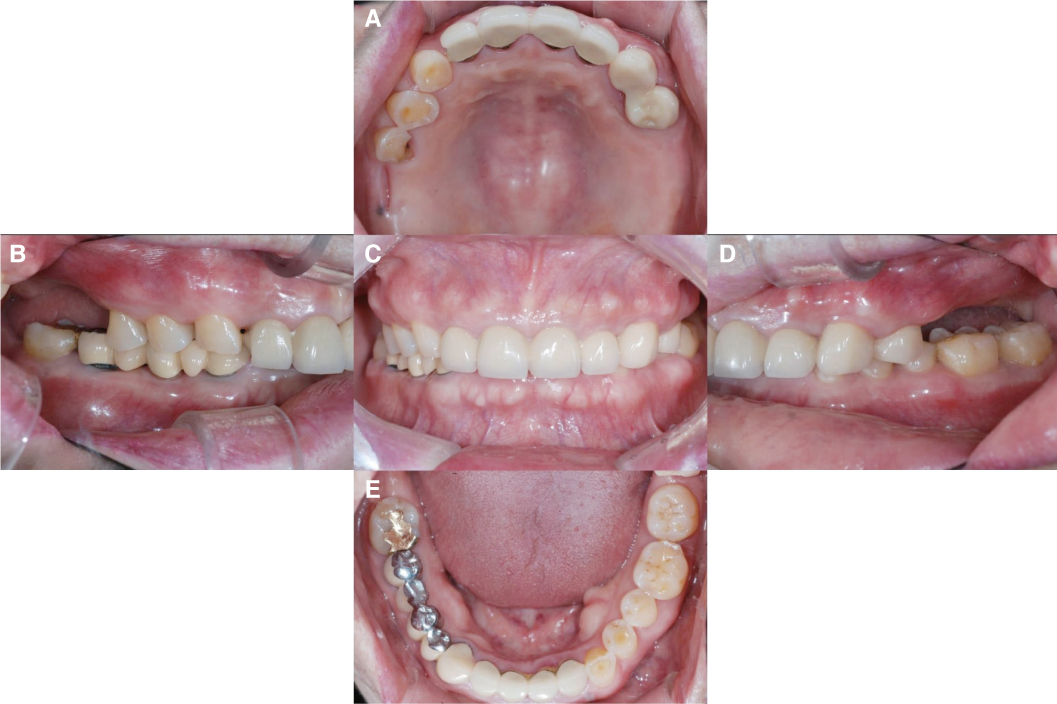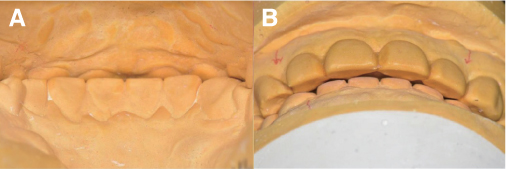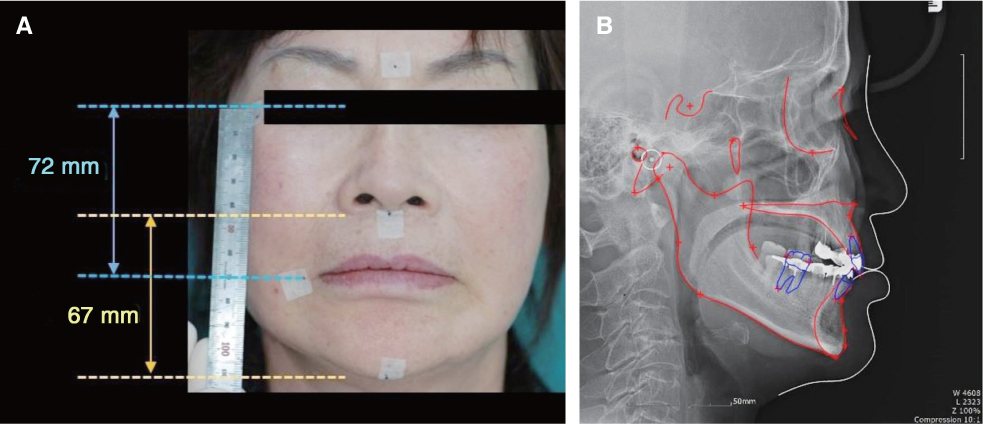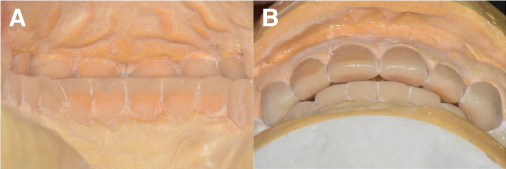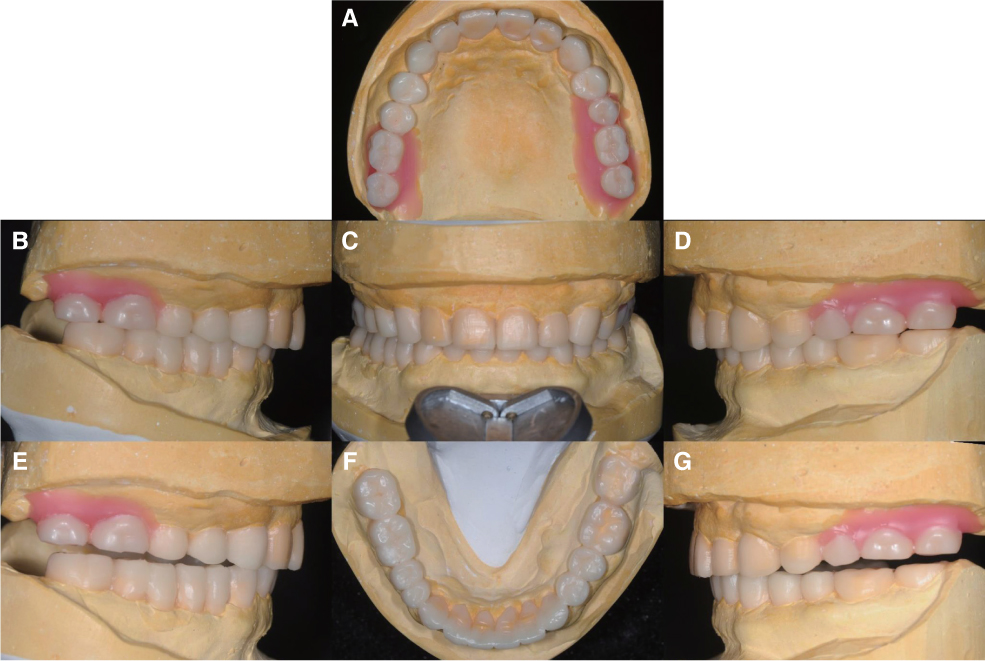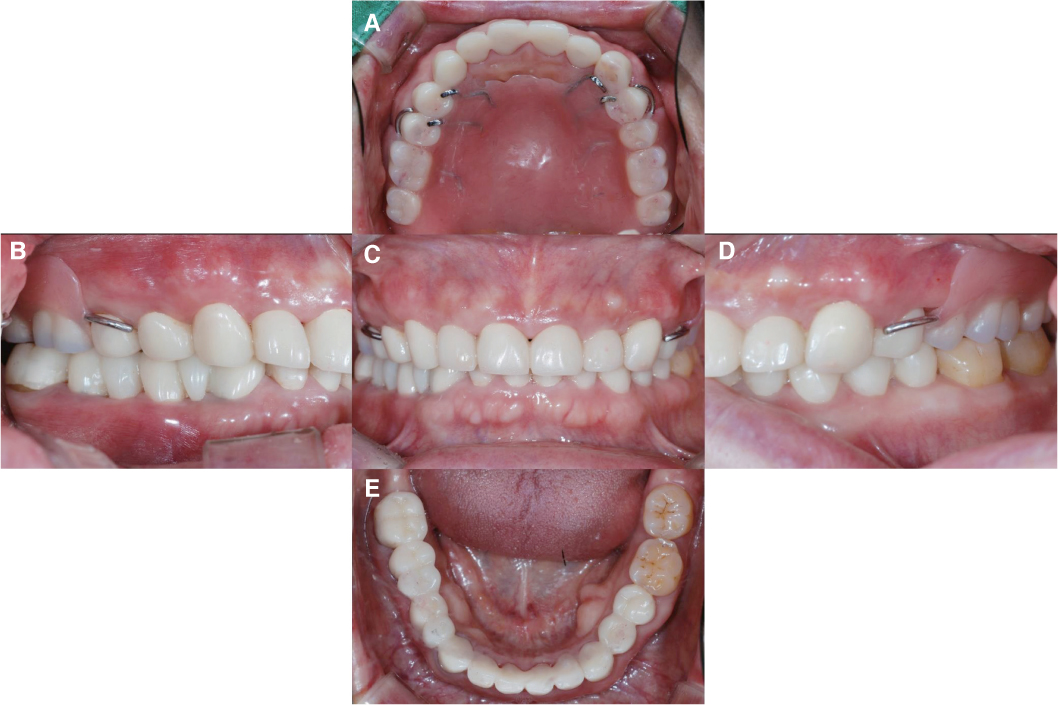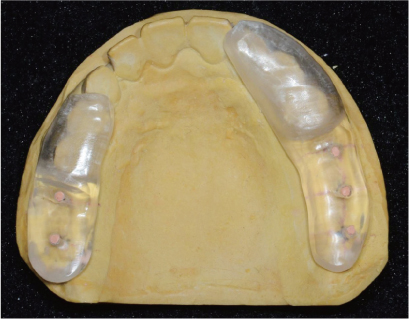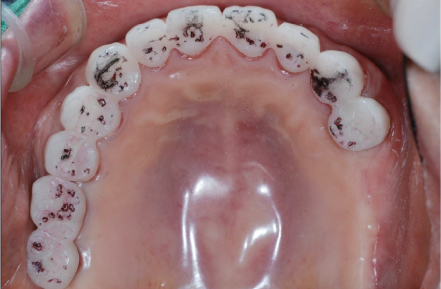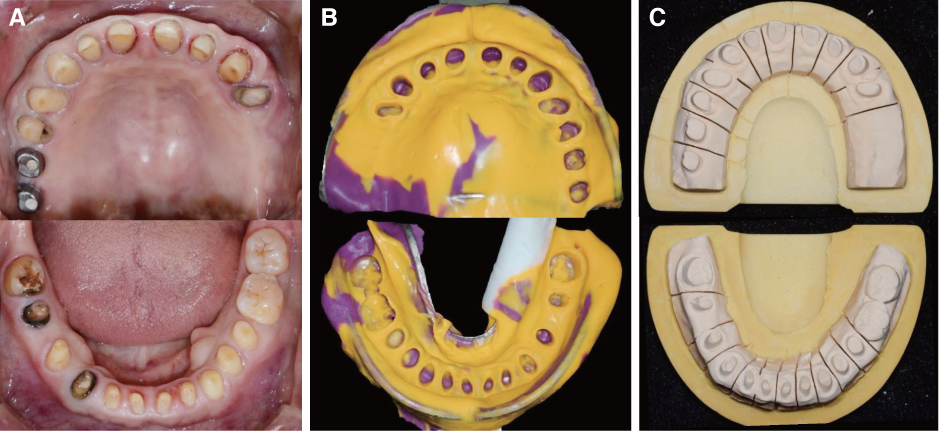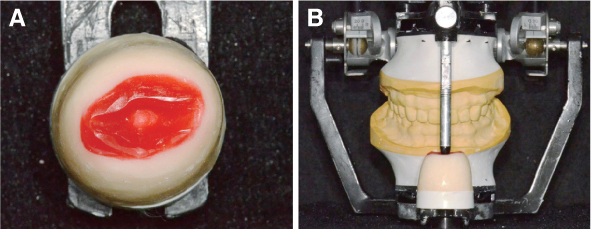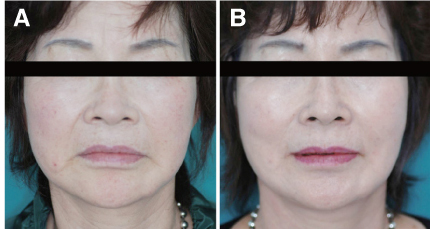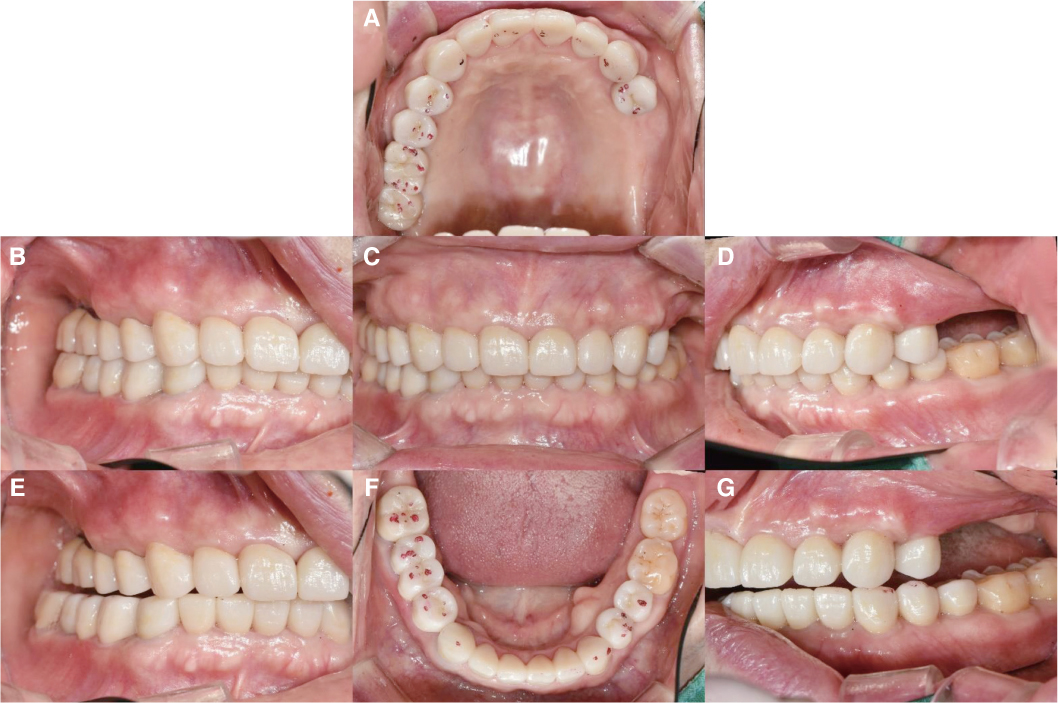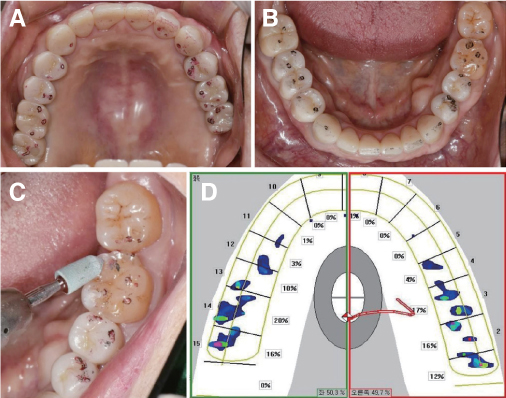J Korean Acad Prosthodont.
2019 Oct;57(4):405-415. 10.4047/jkap.2019.57.4.405.
Full mouth rehabilitation in patient with loss of vertical dimension and deep bite due to tooth wear
- Affiliations
-
- 1Department of Prosthodontics, School of Dentistry and Institute of Oral Bio-Science, Chonbuk National University, Jeonju, Republic of Korea. jmseo@jbnu.ac.kr
- KMID: 2461148
- DOI: http://doi.org/10.4047/jkap.2019.57.4.405
Abstract
- Excessive tooth wear can cause irreversible damage to the occlusal surface and can alter the anterior occlusal relationship by destroying the structure of the anterior teeth needed for esthetics and proper anterior guidance. The anterior deep bite is not a morbid occlusion by itself, but it may cause problems such as soft tissue trauma, opposing tooth eruption, tooth wear, and occlusal trauma if there are no stable occlusal contacts between the lower incisal edge against its upper lingual surface. The most important goal of treatment is to form stable occlusal contact in centric relation. In this case report, patients with decrease in vertical dimension and anterior deep bite due to maxillary posterior tooth loss and excessive tooth wear were treated full mouth rehabilitation with increased vertical dimension to regain the space for restoration and improve anterior occlusal relationship and esthetics. The functional and aesthetic problems of the patient could be solved by the equal intensity contact of all the teeth in centic relation (CR), anterior guidance in harmony with the functional movement, and restoration of the wear surface beyond the enamel range.
MeSH Terms
Figure
Reference
-
1. Dawson PE. Functional Occlusion: from TMJ to smile design. St. Louis: Mosby Elsevier;2007. p. 430–466.2. Akerly WB. Prosthodontic treatment of traumatic overlap of the anterior teeth. J Prosthet Dent. 1977; 38:26–34.
Article3. The council of professors of dental universities. Textbook of orthodontics. 3rd ed. Seoul: DaehanNarae Publishing;2006. p. 109p. 177–183.4. The glossary of prosthodontic terms: Ninth edition. J Prosthet Dent. 2017; 117:e1–e105.5. Okeson JP. Management of temporomandibular disorders and occlusion. 7th ed. St. Louis: Mosby Elsevier;2008. p. 56–61.6. Beddis HP, Durey K, Alhilou A, Chan MF. The restorative management of the deep overbite. Br Dent J. 2014; 217:509–515.
Article7. Ramfjord SP, Ash MM Jr. Significance of occlusion in the etiology and treatment of early, moderate, and advanced periodontitis. J Periodontol. 1981; 52:511–517.
Article8. Gwon GR. The prosthetic approach for collapsed vertical dimension of occlusion. J Korea Acad Stomatognathic. 2004; 20:170–181.9. Park JH, Jeong CM, Jeon YC, Lim JS. A study on the occlusal plane and the vertical dimension in Korean adults with natural dentition. J Korean Acad Prosthodont. 2005; 43:41–51.10. Willis FM. Features of the face involved in full denture prosthesis. Dent Cosmos. 1935; 77:851–854.11. Pleasure MA. Correct vertical dimension and freeway space. J Am Dent Assoc. 1951; 43:160–163.
Article12. Yang WS, Kim TW, Baek SH. Current orthodontic diagnosis. Seoul: DaehanNarae Publishing;2007. p. 447.13. Rodriguez-Cardenas YA, Arriola-Guillen LE, Flores-Mir C. Björk-Jarabak cephalometric analysis on CBCT synthesized cephalograms with different dentofacial sagittal skeletal patterns. Dental Press J Orthod. 2014; 19:46–53.
Article14. Turner KA, Missirlian DM. Restoration of the extremely worn dentition. J Prosthet Dent. 1984; 52:467–474.
Article15. Orthlieb JD, Laurent M, Laplanche O. Cephalometric estimation of vertical dimension of occlusion. J Oral Rehabil. 2000; 27:802–807.
Article16. Abduo J, Lyons K. Clinical considerations for increasing occlusal vertical dimension: a review. Aust Dent J. 2012; 57:2–10.
Article
- Full Text Links
- Actions
-
Cited
- CITED
-
- Close
- Share
- Similar articles
-
- Full mouth rehabilitation of patient with decreased occlusal vertical dimension due to severely worn dentition and posterior bite collapse
- A case of full mouth rehabilitation in patient with loss of vertical dimension and deep bite due to tooth wear
- Full mouth rehabilitation of the patient with severe tooth loss and tooth wear with vertical dimension gaining: A case report
- Full-mouth rehabilitation with increasing minimum vertical dimension in the patient with severely worn dentition and deep bite
- A case of full mouth rehabilitation with orthodontic treatment in patient with extensive tooth erosion and wear using monolithic zirconia prostheses

